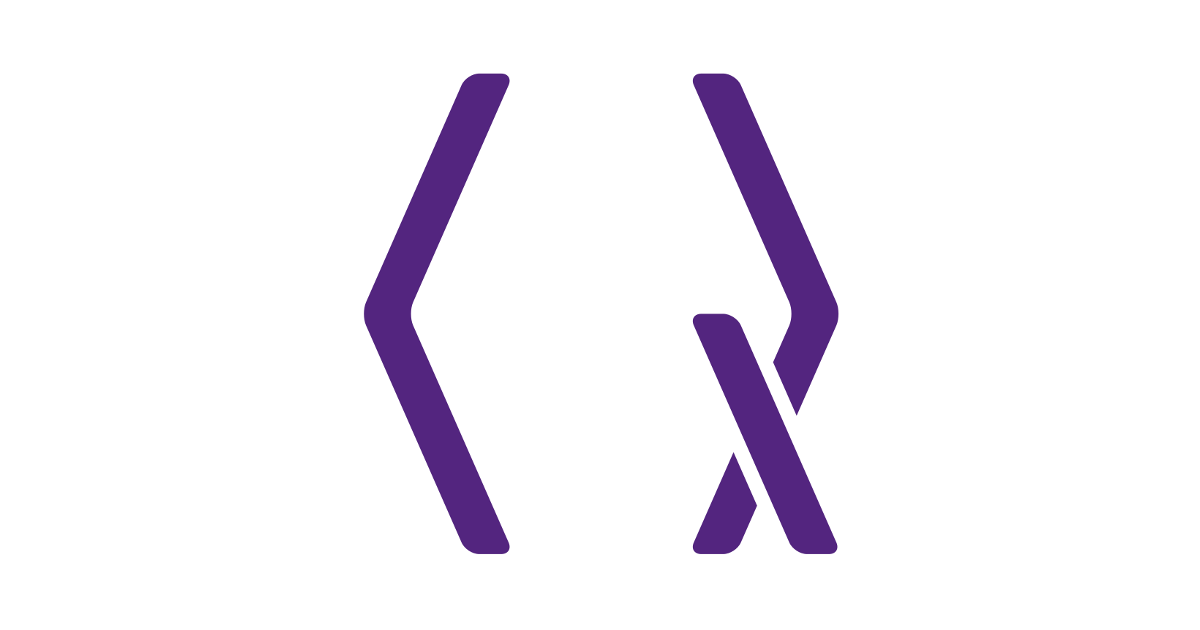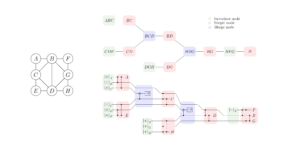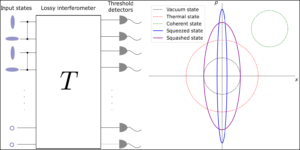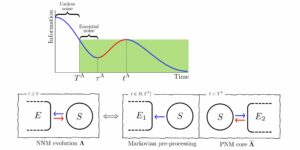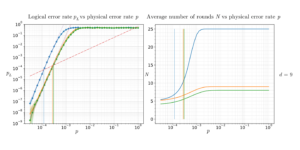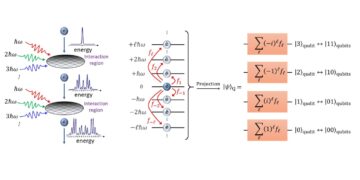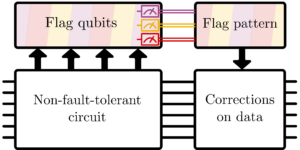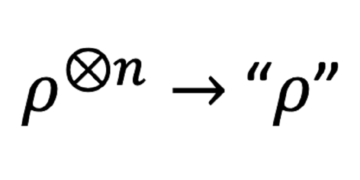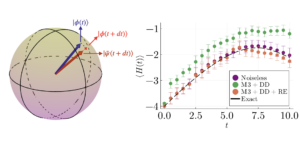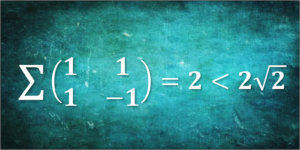1Institute for Quantum Computing and Department of Applied Mathematics, University of Waterloo, 200 University Ave W, Waterloo, ON, Canada
2Department of Mathematics & Computer Science, Mount Allison University, Canada
3Department of Mathematics & Statistics, University of Guelph, Canada
Find this paper interesting or want to discuss? Scite or leave a comment on SciRate.
Abstract
Walgate and Scott have determined the maximum number of generic pure quantum states that can be unambiguously discriminated by an LOCC measurement [Journal of Physics A: Mathematical and Theoretical, 41:375305, 08 2008]. In this work, we determine this number in a more general setting in which the local parties have access to pre-shared entanglement in the form of a resource state. We find that, for an arbitrary pure resource state, this number is equal to the Krull dimension of (the closure of) the set of pure states obtainable from the resource state by SLOCC. Surprisingly, a generic resource state maximizes this number.
Local state discrimination is closely related to the topic of entangled subspaces, which we study in its own right. We introduce $r$-entangled subspaces, which naturally generalize previously studied spaces to higher multipartite entanglement. We use algebraic-geometric methods to determine the maximum dimension of an $r$-entangled subspace, and present novel explicit constructions of such spaces. We obtain similar results for symmetric and antisymmetric $r$-entangled subspaces, which correspond to entangled subspaces of bosonic and fermionic systems, respectively.
► BibTeX data
► References
[1] Hirotachi Abo, Giorgio Ottaviani, and Chris Peterson. Induction for secant varieties of Segre varieties. Transactions of the American Mathematical Society, 361 (2): 767–792, 2008. http://doi.org/10.1090/S0002-9947-08-04725-9.
https://doi.org/10.1090/S0002-9947-08-04725-9
[2] James Alexander and André Hirschowitz. Polynomial interpolation in several variables. Journal of Algebraic Geometry, 4 (2): 201–222, 1995.
[3] Jinpeng An. Rigid geometric structures, isometric actions, and algebraic quotients. Geometriae Dedicata, 157 (1): 153–185, 2012. https://doi.org/10.1007/s10711-011-9603-2.
https://doi.org/10.1007/s10711-011-9603-2
[4] Remigiusz Augusiak, Jordi Tura, and Maciej Lewenstein. A note on the optimality of decomposable entanglement witnesses and completely entangled subspaces. Journal of Physics A: Mathematical and Theoretical, 44 (21): 212001, 2011. https://doi.org/10.1088/1751-8113/44/21/212001.
https://doi.org/10.1088/1751-8113/44/21/212001
[5] Somshubhro Bandyopadhyay, Saronath Halder, and Michael Nathanson. Entanglement as a resource for local state discrimination in multipartite systems. Physical Review A, 94: 022311, 2016. https://doi.org/10.1103/PhysRevA.94.022311.
https://doi.org/10.1103/PhysRevA.94.022311
[6] Karin Baur, Jan Draisma, and Willem A. de Graaf. Secant dimensions of minimal orbits: Computations and conjectures. Experimental Mathematics, 16 (2): 239–250, 2007. https://doi.org/10.1080/10586458.2007.10128997.
https://doi.org/10.1080/10586458.2007.10128997
[7] Alessandra Bernardi and Davide Vanzo. A new class of non-identifiable skew-symmetric tensors. Annali di Matematica Pura ed Applicata (1923-), 197 (5): 1499–1510, 2018. https://doi.org/10.1007/s10231-018-0734-z.
https://doi.org/10.1007/s10231-018-0734-z
[8] Alessandra Bernardi, Enrico Carlini, Maria Catalisano, Alessandro Gimigliano, and Alessandro Oneto. The hitchhiker guide to: Secant varieties and tensor decomposition. Mathematics, 6 (12): 314, 2018. https://doi.org/10.3390/math6120314.
https://doi.org/10.3390/math6120314
[9] B. V. Rajarama Bhat. A completely entangled subspace of maximal dimension. International Journal of Quantum Information, 04 (02): 325–330, 2006. https://doi.org/10.1142/S0219749906001797.
https://doi.org/10.1142/S0219749906001797
[10] Ada Boralevi. A note on secants of grassmannians. Rendiconti dell’Istituto di Matematica dell’Universita di Trieste, 45: 67–72, 2013.
[11] Armand Borel. Linear Algebraic Groups. Graduate Texts in Mathematics. Springer New York, 2012.
[12] Michel Brion. Introduction to actions of algebraic groups. Les cours du CIRM, 1 (1): 1–22, 2010. URL http://eudml.org/doc/116362.
http://eudml.org/doc/116362
[13] Jianxin Chen, Hillary Dawkins, Zhengfeng Ji, Nathaniel Johnston, David Kribs, Frederic Shultz, and Bei Zeng. Uniqueness of quantum states compatible with given measurement results. Physical Review A, 88: 012109, 2013. https://doi.org/10.1103/PhysRevA.88.012109.
https://doi.org/10.1103/PhysRevA.88.012109
[14] Lin Chen, Yu Yang, and Wai-Shing Tang. Schmidt number of bipartite and multipartite states under local projections. Quantum Information Processing, 16: 75, 2017. https://doi.org/10.1007/s11128-016-1501-y.
https://doi.org/10.1007/s11128-016-1501-y
[15] Luca Chiantini and Ciro Ciliberto. On the concept of k-secant order of a variety. Journal of the London Mathematical Society, 73 (2): 436–454, 04 2006. https://doi.org/10.1112/S0024610706022630.
https://doi.org/10.1112/S0024610706022630
[16] Toby Cubitt, Ashley Montanaro, and Andreas Winter. On the dimension of subspaces with bounded schmidt rank. Journal of Mathematical Physics, 49 (2): 022107, 2008. https://doi.org/10.1063/1.2862998.
https://doi.org/10.1063/1.2862998
[17] Maciej Demianowicz and Remigiusz Augusiak. From unextendible product bases to genuinely entangled subspaces. Physical Review A, 98: 012313, 2018. https://doi.org/10.1103/PhysRevA.98.012313.
https://doi.org/10.1103/PhysRevA.98.012313
[18] Wolfgang Dür, Guifre Vidal, and J. Ignacio Cirac. Three qubits can be entangled in two inequivalent ways. Physical Review A, 62: 062314, 2000. https://doi.org/10.1103/PhysRevA.62.062314.
https://doi.org/10.1103/PhysRevA.62.062314
[19] Shaun M. Fallat. Bidiagonal factorizations of totally nonnegative matrices. The American Mathematical Monthly, 108 (8): 697–712, 2001. https://doi.org/10.2307/2695613.
https://doi.org/10.2307/2695613
[20] Gilad Gour and Nolan R. Wallach. Entanglement of subspaces and error-correcting codes. Physical Review A, 76: 042309, 2007. https://doi.org/10.1103/PhysRevA.76.042309.
https://doi.org/10.1103/PhysRevA.76.042309
[21] Janusz Grabowski, Marek Kuś, and Giuseppe Marmo. Segre maps and entanglement for multipartite systems of indistinguishable particles. Journal of Physics A: Mathematical and Theoretical, 45 (10): 105301, 2012. https://doi.org/10.1088/1751-8113/45/10/105301.
https://doi.org/10.1088/1751-8113/45/10/105301
[22] Daniel R. Grayson and Michael E. Stillman. Macaulay2, a software system for research in algebraic geometry. Available at http://www.math.uiuc.edu/Macaulay2/.
http://www.math.uiuc.edu/Macaulay2/
[23] D. Gross, S. T. Flammia, and J. Eisert. Most quantum states are too entangled to be useful as computational resources. Physical Review Letters, 102: 190501, 2009. https://doi.org/10.1103/PhysRevLett.102.190501.
https://doi.org/10.1103/PhysRevLett.102.190501
[24] Joe Harris. Algebraic Geometry: A First Course. Graduate Texts in Mathematics. Springer New York, 2013.
[25] Robin Hartshorne. Algebraic Geometry. Graduate Texts in Mathematics. Springer New York, 2013.
[26] Patrick Hayden, Debbie W. Leung, and Andreas Winter. Aspects of generic entanglement. Communications in Mathematical Physics, 265 (1): 95–117, 2006. https://doi.org/10.1007/s00220-006-1535-6.
https://doi.org/10.1007/s00220-006-1535-6
[27] M. Hein, J. Eisert, and H. J. Briegel. Multiparty entanglement in graph states. Physical Review A, 69: 062311, Jun 2004. https://doi.org/10.1103/PhysRevA.69.062311.
https://doi.org/10.1103/PhysRevA.69.062311
[28] Teiko Heinosaari, Luca Mazzarella, and Michael M. Wolf. Quantum tomography under prior information. Communications in Mathematical Physics, 318 (2): 355–374, 2013. https://doi.org/10.1007/s00220-013-1671-8.
https://doi.org/10.1007/s00220-013-1671-8
[29] James E. Humphreys. Linear Algebraic Groups. Graduate Texts in Mathematics. Springer New York, 2012.
[30] Nathaniel Johnston. Non-positive-partial-transpose subspaces can be as large as any entangled subspace. Physical Review A, 87 (6), 2013. https://doi.org/10.1103/PhysRevA.87.064302.
https://doi.org/10.1103/PhysRevA.87.064302
[31] Nathaniel Johnston, Benjamin Lovitz, and Daniel Puzzuoli. The non-m-positive dimension of a positive linear map. Quantum, 3: 172, 2019. https://doi.org/10.22331/q-2019-08-12-172.
https://doi.org/10.22331/q-2019-08-12-172
[32] Joseph M. Landsberg. Tensors: Geometry and Applications. Graduate studies in mathematics. American Mathematical Society, 2012.
[33] Joseph M. Landsberg and Laurent Manivel. On the ideals of secant varieties of Segre varieties. Foundations of Computational Mathematics, 4 (4): 397–422, 2004. https://doi.org/10.1007/s10208-003-0115-9.
https://doi.org/10.1007/s10208-003-0115-9
[34] Benjamin Lovitz and Nathaniel Johnston. Entangled-subspaces-code. https://github.com/benjamin-lovitz/Entangled-subspaces-code, 2020.
https://github.com/benjamin-lovitz/Entangled-subspaces-code
[35] K. R. Parthasarathy. On the maximal dimension of a completely entangled subspace for finite level quantum systems. Proceedings Mathematical Sciences, 114 (4): 365–374, 2004. https://doi.org/10.1007/BF02829441.
https://doi.org/10.1007/BF02829441
[36] Stephan Rabanser, Oleksandr Shchur, and Stephan Günnemann. Introduction to tensor decompositions and their applications in machine learning. arXiv preprint, stat.ML/1711.10781, 2017. https://doi.org/10.48550/arXiv.1711.10781.
https://doi.org/10.48550/arXiv.1711.10781
[37] Anna Sanpera, Dagmar Bruß, and Maciej Lewenstein. Schmidt-number witnesses and bound entanglement. Physical Review A, 63: 050301, 2001. https://doi.org/10.1103/PhysRevA.63.050301.
https://doi.org/10.1103/PhysRevA.63.050301
[38] Andrew J. Scott. Multipartite entanglement, quantum-error-correcting codes, and entangling power of quantum evolutions. Physical Review A, 69: 052330, 2004. https://doi.org/10.1103/PhysRevA.69.052330.
https://doi.org/10.1103/PhysRevA.69.052330
[39] Łukasz Skowronek, Erling Størmer, and Karol Życzkowski. Cones of positive maps and their duality relations. Journal of Mathematical Physics, 50: 062106, 2009. https://doi.org/10.1063/1.3155378.
https://doi.org/10.1063/1.3155378
[40] Barbara M. Terhal and Paweł Horodecki. Schmidt number for density matrices. Physical Review A, 61: 040301(R), 2000. https://doi.org/10.1103/PhysRevA.61.040301.
https://doi.org/10.1103/PhysRevA.61.040301
[41] Ledyard R. Tucker. Some mathematical notes on three-mode factor analysis. Psychometrika, 31 (3): 279–311, 1966. https://doi.org/10.1007/BF02289464.
https://doi.org/10.1007/BF02289464
[42] Jonathan Walgate and Andrew J. Scott. Generic local distinguishability and completely entangled subspaces. Journal of Physics A: Mathematical and Theoretical, 41: 375305, 08 2008. https://doi.org/10.1088/1751-8113/41/37/375305.
https://doi.org/10.1088/1751-8113/41/37/375305
[43] John Watrous. The Theory of Quantum Information. Cambridge University Press, 2018.
Cited by
[1] Somshubhro Bandyopadhyay and Vincent Russo, “Entanglement cost of discriminating noisy Bell states by local operations and classical communication”, Physical Review A 104 3, 032429 (2021).
[2] Gabriel Champagne, Nathaniel Johnston, Mitchell MacDonald, and Logan Pipes, “Spectral Properties of Symmetric Quantum States and Symmetric Entanglement Witnesses”, arXiv:2108.10405.
[3] Benjamin Lovitz and Vincent Steffan, “New techniques for bounding stabilizer rank”, arXiv:2110.07781.
The above citations are from SAO/NASA ADS (last updated successfully 2022-07-28 02:31:28). The list may be incomplete as not all publishers provide suitable and complete citation data.
On Crossref’s cited-by service no data on citing works was found (last attempt 2022-07-28 02:31:27).
This Paper is published in Quantum under the Creative Commons Attribution 4.0 International (CC BY 4.0) license. Copyright remains with the original copyright holders such as the authors or their institutions.

